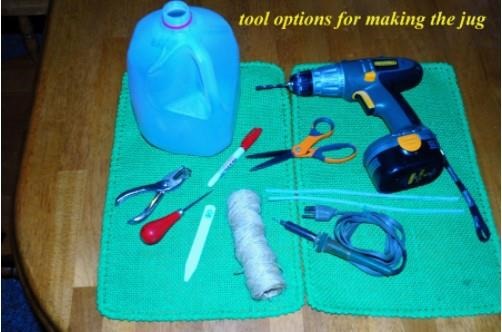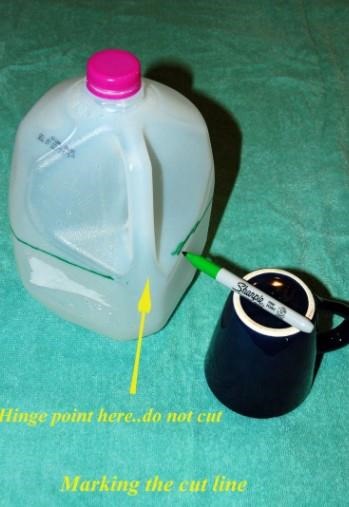By Lori Voll-Wallace
What Is Winter Sowing?
When you consider how seeds germinate in nature, it makes sense to sow seeds the same way. In late summer, left to their own devices, seeds fall to the ground. They slowly get covered with leaves and other natural materials to begin their long winter in the soil. Exposure to cold temperatures and moist conditions breaks dormancy and the seeds germinate when temperatures increase in the spring.
Winter sowing is the process of planting seeds outdoors in a container during the winter months. The container remains outdoors until the seedlings emerge in the spring. The container protects the seeds from animals and harsh weather, but the exposure to colder temperatures breaks dormancy and the seeds germinate. The container also provides an ideal environment for germination in the spring.
What to Winter Sow?
Winter sowing is ideal for some annuals, perennials, and wildflowers. Check out a seed catalogue: most will have some sort of notation about a seed's germination requirements. Look for seeds that are described with the following terms: reseeds; colonizes; self-sows; hardy seeds; seedlings can withstand frost; sow outdoors in late autumn or early winter; sow outdoors in early spring while frosts may still occur; needs pre-chilling; requires stratification.
When to Winter Sow?
The best time to winter sow perennials and hardy annuals is generally December to March depending on the weather conditions in your area. These seeds require a consistent period of moist, cold temperatures before germination occurs in spring. Tender plants including annuals and vegetables can be sown later in spring (March or April) as they do not require a cold period in order to germinate.
What Are the Benefits of Winter Sowing?
When you direct sow in the ground, the seeds are at the mercy of Mother Nature. They can be washed out in downpours; eaten by critters, bugs, and birds; desiccate in the wind; or rot in the soil.
Containerized seedlings stay more compact and do not need to be hardened off before planting in the garden.
Winter sowing is ideal for those with limited indoor space for seed starting. No special lighting or equipment is required for germination.

Photos: George Schreck
How To:
- Clean container — Wash a milk jug or suitable container in warm, soapy water and rinse. Discard the top. The opening allows rain and melting snow to keep the soil moist.
- Cut container — If not using a container with a hinged lid, insert a serrated knife or box cutter into the side of the jug, lay it on its side and cut all the way round, leaving about 1.5 inches (under the handle, if using a jug with a handle) so that the top hinges open. Tip: use coffee mug with marker placed on top. Twirl jug around to mark a perfect cutting line.

- Create air holes — Use a knife, screwdriver or nail to poke holes for drainage in the bottom of the container. This is important--if you don’t make drainage holes, your seeds will drown! If using a container with a hinged lid, poke a few air holes in the top of the lid.
- Add soil — Fill the container with 2 to 4" of a soilless seed starting medium. Avoid garden soil which may contain pathogens and weed seeds.
- Water the soil — Lightly moisten growing medium and allow excess to drain.
- Sow the seeds — Follow the directions on the seed package and sow seeds on the surface of the soil. Cover the seeds with a layer of soil and gently pat down.
- Seal the container – Seal the cut edges of the container with light-colored duct tape. Leave the top open. Tip: rather than using tape, make holes for pipe cleaners or twist ties for easy opening and closing without the stickiness of the tape.
- Label container – use a laundry marker (better than permanent marker) to label the type of seed and date of sowing. Place the label in the bottom of the container.
- Set outdoors and leave! – Site the container in an area that receives winter sun. Do not place the container on a covered porch as the seeds require the moisture from the rain and snow. They should experience all the weather conditions they would in nature. Consider placing containers in a milk crate if conditions are windy. Forget about your containers until the spring when the seedlings germinate.
Source : psu.edu